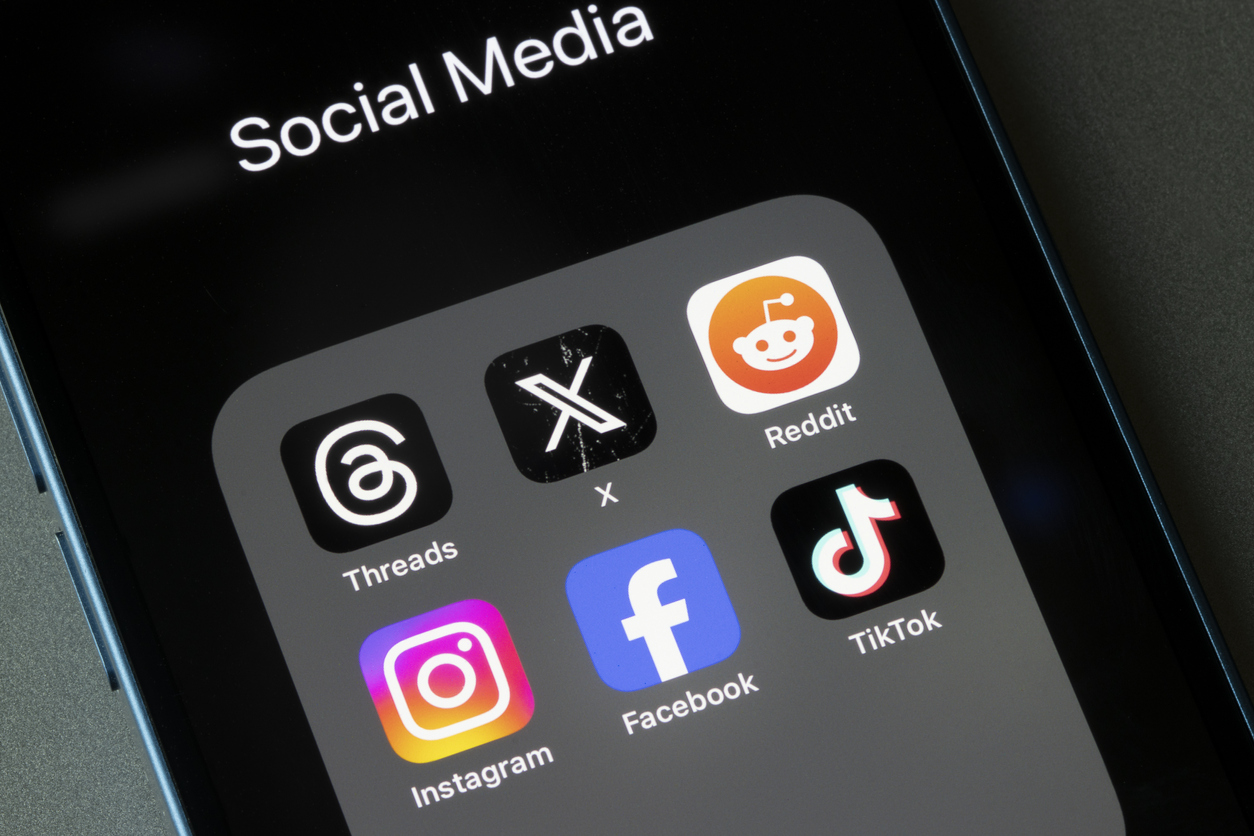Social media advertising has become a powerful tool for businesses to connect with their audiences in the 21st century’s dynamic digital landscape. It provides an exceptional opportunity to build brand visibility, engage with customers directly, and drive business growth. However, harnessing its full potential requires a thorough understanding of its intricacies and a strategic approach.
This article delves into social media marketing and provides actionable strategies for businesses to succeed. We aim to unveil the secret behind effective campaigns, explore how to create engaging content, target the right audience, analyze performance, and fine-tune strategies for optimal results. This guide will serve as a roadmap for businesses looking to navigate the realm of social media advertising.
Understanding the Evolution of Social Media Advertising
The development of social media advertising has been an intriguing journey, reflecting changes in technology and consumer behavior. Initially, social media platforms were mainly used for personal interactions and sharing, providing businesses with a new channel for brand exposure. Advertisements were typically banner-style placements, similar to traditional online advertising methods in the early days.

As time went by, social media advertising grew more sophisticated and targeted. With the availability of advanced analytics tools, businesses could collect rich user data, which allowed for personalized and targeted advertising strategies. Platforms like Facebook and Instagram introduced native advertising, where ads blend seamlessly with regular content, making them less intrusive and more engaging. Currently, social media advertising goes beyond simple product promotion, with businesses using platforms to tell stories, engage with consumers, and even offer e-commerce capabilities.
This ongoing evolution of social media advertising highlights its enormous potential and the ever-changing landscape that businesses must navigate. Understanding this evolution is fascinating and crucial for marketers to stay ahead and leverage the full power of social media advertising in their strategies.
The Modern Shift: Personalization and Precision
The shift towards personalization and precision in social media advertising marks a significant turning point in its evolution. Modern social media platforms gather vast amounts of user data, enabling advertisers to create highly tailored campaigns that resonate on a profoundly personal level. This shift has transformed social media advertising from a mass marketing tool into a precision instrument capable of targeting consumers based on specific demographics, interests, and behaviors. It moves away from broad strokes and towards surgical precision, delivering the right message to the right person at the right time.
The power of personalization in social media advertising is immense. Businesses can increase engagement, strengthen brand loyalty, and drive conversions by tailoring messages to individuals or particular groups. Consumers are more likely to respond to personally relevant ads rather than generic one-size-fits-all campaigns. However, a robust audience understanding is crucial to achieving this level of personalization. Brands must invest in analytics tools and resources to gather and interpret data. By doing so, they can gain meaningful insights into their audiences, which can guide the creation of highly effective, personalized social media advertising campaigns.
Crafting a Robust Social Media Advertising Strategy
Social media advertising has become an integral part of any digital marketing strategy. With millions of users spending hours on social media platforms daily, it’s an excellent opportunity for businesses to reach their target audience. However, crafting a robust social media advertising strategy can be overwhelming, with many options. In this section, we’ll discuss key factors to consider when creating an effective social media advertising plan.
1. Audience Segmentation and Targeting

When reaching the right audience, audience segmentation and targeting are key strategies. Audience segmentation involves dividing your audience into groups based on shared characteristics such as demographics, interests, or behaviors. This can help you tailor your messaging and marketing efforts to each group’s unique needs and preferences. Meanwhile, targeting involves identifying the specific individuals or groups within those segments who are most likely to be interested in your offer based on factors such as past behavior or current needs. Combining these two approaches allows you to create more effective marketing campaigns that resonate with your audience and drive better results.
2. Compelling Visual Content
In the era of fleeting attention spans, the visual allure of social media advertising has become a linchpin for capturing audience interest. Crafting compelling visual content is an art that demands strategic precision. One potent strategy lies in embracing dynamic formats such as video content. A prime example is the “Dollar Shave Club” campaign that revolutionized the landscape with its humorous and engaging promotional videos. The brand conveyed its message effectively by leveraging the power of storytelling through short, entertaining clips. It established a memorable and shareable identity, fostering a connection with its audience.
Moreover, integrating interactive elements within visual content has proven to be a game-changer. Consider the case of Airbnb’s Instagram Stories featuring interactive polls and quizzes. By encouraging users to participate actively, Airbnb enhanced engagement and garnered valuable insights into user preferences. This strategy goes beyond passive consumption, transforming the audience into active participants and amplifying the impact of visual content on social media platforms.
3. Data-Driven Decision Making
Utilizing social media effectively for advertising success relies heavily on data-driven decision-making to determine patterns, trends, and insights that inform your advertising strategies. Whether you’re attempting to comprehend your audience better, optimize your ad spend, or assess the performance of your campaigns – data is the key. Leveraging tools such as Google Analytics, Hootsuite, or Buffer can help sift through the plethora of data to provide valuable insights.

However, data-driven decision-making is not just about numbers; it’s also about translating these insights into actionable strategies. For instance, if your data indicates that your audience is most active during weekday evenings, you could schedule your posts for maximum visibility. Similarly, if your posts with video content receive more engagement, you might want to invest more in creating dynamic video ads. Therefore, data provides the foundation for informed strategic decisions, ultimately enhancing the effectiveness of your social media advertising efforts.
4. Influencer Partnerships
The symbiotic relationship between brands and influencers has become a potent catalyst for social media ad success. Influencer partnerships represent a departure from the traditional celebrity endorsements of the past, ushering in an era of authenticity and relatability. Marketers now leverage the magnetic pull of micro-influencers—individuals with smaller yet highly engaged followings—to infuse their campaigns with a personal touch. These influencers, often niche experts or passionate content creators, possess an innate ability to connect with their audience profoundly. Marketers can tap into a ready-made community by aligning with influencers whose values align with their brand, leveraging the trust these influencers have cultivated to enhance their brand credibility.
Strategies for Effective Influencer Collaboration
Effective collaboration with influencers demands a nuanced approach. Marketers must identify influencers whose audience aligns with their target demographic, ensuring the content seamlessly integrates with the influencer’s usual style. Authenticity is critical; content that feels forced or disingenuous risks alienating the audience it aims to engage. Marketers can also maximize impact through interactive formats such as Q&A sessions, giveaways, or behind-the-scenes glimpses. These strategies foster engagement and amplify the campaign’s reach through the influencer’s network. The result is a dynamic synergy where brands benefit from the influencer’s authentic voice, and influencers gain credibility by associating with brands that resonate with their audience. In essence, influencer partnerships unlock a social media advertising strategy that is not just seen but genuinely embraced by a receptive and trusting audience.
View this post on Instagram
5. Social Commerce Integration
As social media advertising continues to evolve, integrating social commerce is taking center stage as a pivotal strategy that bridges the gap between engagement and tangible transactions. Previously, social media acted as a channel to direct traffic to external sales platforms, often causing friction in the consumer journey. However, the current approach has flipped this narrative by integrating commerce within social media platforms. Now, marketers can leverage the immersive environments of platforms like Instagram and Facebook, where users can discover products and make purchases without leaving the app. This evolution streamlines the customer journey, transforming social media from showcasing products into a dynamic marketplace where engagement translates directly into transactions.
To navigate social commerce integration, marketers need a strategic approach that prioritizes user experience and convenience. One effective strategy is optimizing product catalogs for easy browsing. This ensures that potential customers can explore offerings effortlessly. Implementing in-app purchasing features further reduces friction, allowing users to make seamless transactions with just a few clicks. Marketers can also leverage shoppable posts to showcase products in the context of engaging content, turning inspiration into immediate action. Additionally, incorporating limited-time offers or exclusive deals for social media followers cultivates a sense of urgency, compelling users to take advantage of the convenience offered by in-app purchases. By embracing social commerce, marketers enhance the overall user experience and capitalize on the impulse-driven nature of social media engagement, transforming each like, share, or comment into a potential sale.
Case Studies: Real-World Success Stories
To illustrate the effectiveness of modern social media advertising strategies, let’s explore a couple of compelling case studies.
Case Study 1: BlendJet’s TikTok Campaigns Increased Revenue
BlendJet, a company that sells portable blenders, wanted to improve its social media presence and increase sales. To achieve this, they decided to take advantage of the popularity of TikTok and created a series of short videos showcasing the versatility of their product. The videos were upbeat and fun, featuring BlendJet being used to make smoothies, protein shakes, and even cocktails. They also included popular music and dance trends to appeal to TikTok’s audience.
Thanks to their targeting strategies, solid creator collaborations, and TikTok’s Spark Ads, the campaign was a huge success. The videos went viral and were shared across other social media platforms, resulting in over 28 million impressions, 407,000 clicks, and 12,000 conversions. The click-through rate was 1.43%, demonstrating the effectiveness of the campaign. As a result, BlendJet’s sales soared, and the company gained a strong presence in the industry via TikTok.
@blendjet Best purchase ever! #thingstiktokmademebuy #impulsebuy #BlendJet #portableblender #tiktokbuys #impulsebuy #bestbuy #impulsebuying
BlendJet’s TikTok campaign helped the company build brand awareness among a younger audience and increased sales. Even those who didn’t need a portable blender were drawn in by the fun and energy of the videos, resulting in shares and increased reach. The videos showcased the convenience of BlendJet in a relatable and engaging way. The campaign’s success has led BlendJet to focus on TikTok and other social media platforms to reach new audiences and continue building its brand.
Case Study 2: Video Advertising On YouTube Worked Wonders For Coca-Cola
Coca-Cola is a brand that has always been at the forefront of innovative advertising. With the rise of social media, the company recognized the enormous potential of video advertising in reaching its audience. In 2014, they launched the “Share a Coke” campaign, which printed popular names on Coca-Cola bottles and invited customers to find and share their names. The campaign was a massive success, and the company utilized video advertising to maximize its impact.
The “Share a Coke” campaign was one of Coca-Cola’s most successful social media campaigns. The company created a dynamic video ad campaign centered on sharing a Coke with someone special. The ad showed people sharing a Coke with friends and family and the joy and happiness it brought. The video was shared widely on social media platforms, generating millions of views and shares. The campaign was so successful that it was rolled out globally, significantly increasing sales and brand awareness.
The success of the “Share a Coke” campaign is a testament to the power of video in social media marketing. The dynamic video ad campaign created by Coca-Cola effectively communicated the brand’s message, resonated with the audience, and generated significant buzz on social media. The campaign’s success contributed to the brand’s constant visibility, with customers associating Coca-Cola with joy, happiness, and sharing. Overall, the Share a Coke campaign is an excellent example of how video advertising can be used to create a successful social media campaign, and it remains one of the most iconic campaigns in Coca-Cola’s history.
Conclusion: The Future of Social Media Advertising
As we navigate the ever-changing landscape of social media advertising, we are reminded that it is a powerful tool that enables businesses to reach their target audience more personally and engagingly. One thing is clear: the future is bright for those who embrace innovation and stay attuned to consumer preferences. In this context, social media advertising can be a game-changer for businesses looking to connect with their customers and stand out in the crowded digital space.
By understanding the evolution from traditional to modern strategies and implementing best practices, businesses can unlock the full potential of social media advertising and achieve unparalleled success in the digital realm. This requires a deep understanding of the social media platforms, their audience, and the ever-changing trends and algorithms that govern them. With the right approach, businesses can create compelling content that resonates with their audience, drives engagement, and converts into sales.
In conclusion, social media advertising is not just a tool; it’s a dynamic force that, when harnessed effectively, can propel brands to unprecedented heights. The strategies outlined here serve as a roadmap for marketers ready to unlock the power of social media advertising and shape the future of digital marketing. By staying abreast of the latest trends and adopting a data-driven approach, businesses can leverage social media advertising to establish a strong brand identity, foster customer loyalty, and drive sustainable growth in the digital era.

